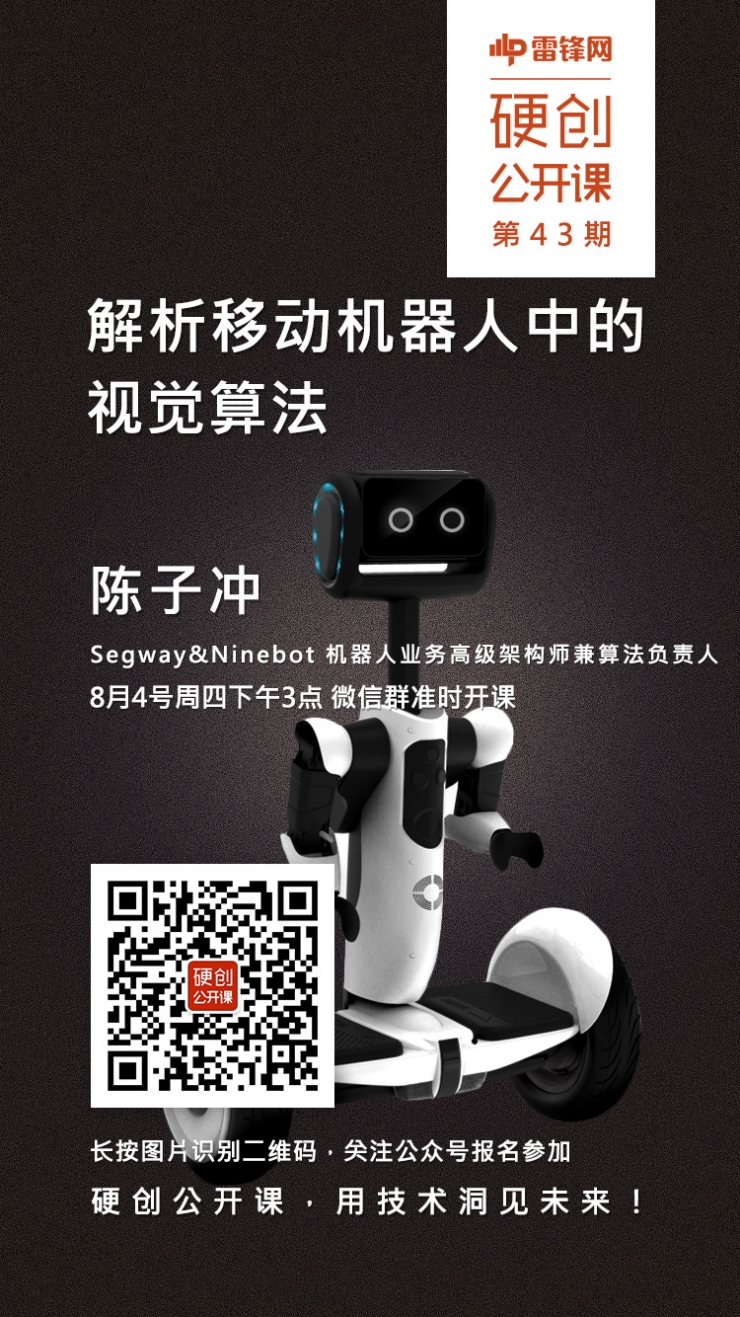Now that autopilot cars have been on the road for a long time, mobile robots that can walk autonomously have also been researched and developed by more and more companies. Many robots have already demonstrated their capabilities in dangerous environments such as military or moon Mars. The mobile robot must completely rely on itself to move smoothly in different environments, then it needs to have similar functions as human eyes, brain, and legs to achieve positioning navigation, path planning, and obstacle avoidance.
In the working process of a mobile robot, which algorithms are needed in such a complex system? What is the process of visual algorithm processing? How is visual tracking implemented? What are the differences in algorithmic requirements for different hardware (laser radar, ultrasonic sensors, or single/binocular cameras)? What are the limitations of the algorithm in mobile robots? How to overcome?
With these questions, we invited Mr. Chen Zichong, Senior Architect and Head of Algorithms for the Segway & Ninebot Robotics business, to tell us how the robot actually observed the world.
Guest Profile
Chen Zichong
Senior architect and head of algorithm for Segway & Ninebot robotics business. Chen Zichong graduated from the Department of Electronic Engineering of Tsinghua University and completed a full set of hardware and software implementations of satellite beacons based on DSP. He has won the excellent papers of undergraduate students. After receiving a doctoral degree at the Swiss Federal Institute of Technology, his doctoral thesis won the National Outstanding Self-financed Student Award. After returning to China, he joined Huawei Media Labs to lead the team to successfully develop real-time binocular vision algorithms for Huawei mobile phones. In 2015, Chen Zichong joined the Segway Robot Project and devoted himself to the development of visual perception algorithms such as robot navigation. The Segway Robot project was released at the CES keynote in January 2016. It was followed by various international media including CNN, Forbes, TechCrunch, Wired, and was named one of the CES best robots.
Event Details:
Time: Thursday, August 4, 2016 3pm
Participation methods: Scan the poster QR code, pay attention to the public registration

Anyang Kayo Amorphous Technology Co.,Ltd is located on the ancient city-Anyang. It was founded in 2011 that specializes in producing the magnetic ring of amorphous nanocrystalline and pays attention to scientific research highly,matches manufacture correspondingly and sets the design,development,production and sale in a body.Our major product is the magnetic ring of amorphous nanocrystalline and current transformer which is applied to the communication, home appliances, electric power, automobile and new energy extensively. We are highly praised by our customers for our good quality,high efficiency,excellent scheme,low cost and perfect sale service.
Nano-crystalline Common Mode Choke Cores have high saturation magnetic induction that can reduce the volume of CMC,outstanding ability to resist unblanced current, excellent impedance and tamperature stability.So it can be used to the inverter circuit ,frequency converter.UPS, switching power,EMC filter and new energy.
Nano Core For Switching Power,Nanocrystalline Core Permeability,household Nanocrystalline Core,Universal Nanocrystalline Core
Anyang Kayo Amorphous Technology Co.,Ltd. , https://www.kayoamotech.com